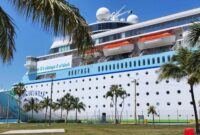Educational tours for adults offer a unique blend of learning and leisure, transforming travel into an enriching experience. These journeys cater to diverse interests, from exploring historical landmarks and immersing in vibrant cultures to delving into the wonders of nature and indulging in culinary delights. Whether you’re a seasoned traveler or a curious novice, educational tours provide structured learning opportunities, expert guidance, and the chance to connect with like-minded individuals, fostering personal growth and expanding horizons far beyond the typical vacation.
This guide delves into the various types of educational tours available, providing insights into planning, marketing, and creating engaging and inclusive experiences. We will explore best practices for designing itineraries, managing budgets, and ensuring accessibility for all participants, while emphasizing sustainable and responsible tourism practices. Ultimately, the aim is to equip you with the knowledge and tools to plan, market, or simply enjoy the transformative power of adult educational tours.
Planning and Logistics of Adult Educational Tours
Successfully organizing an educational tour for adults requires meticulous planning and attention to detail across various logistical aspects. This involves careful itinerary design, comprehensive budgeting, and securing the necessary permits and licenses. Failing to address these elements can significantly impact the tour’s success and participant experience.
Sample Five-Day Historical Tour Itinerary
This itinerary outlines a hypothetical five-day historical tour focusing on the Roman Empire, adaptable to other historical themes and locations. The example demonstrates the necessary components of a detailed itinerary for an adult educational tour.
| Day | Activity | Transportation | Accommodation |
|---|---|---|---|
| 1 | Arrival in Rome, check-in at Hotel Artemide, introductory lecture on Roman history. Evening: Walking tour of the Trastevere neighborhood. | Airport transfer (private van), walking. | Hotel Artemide, Rome (4-star) |
| 2 | Colosseum and Roman Forum guided tour. Afternoon: Palatine Hill exploration and visit to the Capitoline Museums. | Walking tour, public transportation (metro). | Hotel Artemide, Rome |
| 3 | Day trip to Pompeii and Herculaneum. Guided tour of the excavated cities. | Private coach. | Hotel Artemide, Rome |
| 4 | Vatican City tour: St. Peter’s Basilica and Vatican Museums (Sistine Chapel). Afternoon: Castel Sant’Angelo visit. | Public transportation (metro and bus), walking. | Hotel Artemide, Rome |
| 5 | Departure from Rome. | Airport transfer (private van). | N/A |
Educational Tour Budget Creation
Creating a detailed budget is crucial for successful tour management. This involves carefully estimating costs across all categories and considering potential contingencies. The budget should be regularly reviewed and adjusted as needed.
A step-by-step guide includes:
- Transportation: Calculate costs for airport transfers, intercity travel (buses, trains, or private coaches), and local transportation (taxis, public transport). Factor in fuel costs, tolls, and parking fees if applicable. Example: A private coach for a group of 20 might cost $500 per day, while train tickets could range from $20-$50 per person per day.
- Accommodation: Determine the number of nights and the type of accommodation (hotels, guesthouses, etc.). Obtain quotes from various providers and consider factors like location and amenities. Example: A 4-star hotel might cost $150-$250 per night per person.
- Activities: List all planned activities, including entrance fees to museums, historical sites, and other attractions. Factor in potential guided tour costs. Example: Entrance fees to major museums can range from $20-$50 per person.
- Food: Estimate daily food costs per person, considering meals, snacks, and drinks. This could involve group meals or allowing participants to choose their own dining options. Example: A daily food budget of $50-$75 per person is a reasonable estimate.
- Contingency: Allocate a percentage (10-15%) of the total budget for unexpected expenses or changes in plans.
Securing Permits and Licenses for Educational Tours
Operating educational tours often requires obtaining various permits and licenses, varying by location and the nature of the tour. This includes considerations of local regulations, environmental protection, and cultural heritage preservation.
The process typically involves:
- Researching local regulations: Contact relevant authorities (tourism boards, environmental agencies, cultural heritage departments) to understand specific requirements for operating tours in the chosen locations.
- Applying for necessary permits: Complete applications, provide supporting documentation (insurance, business registration), and pay any required fees. Processing times vary.
- Obtaining liability insurance: Secure adequate liability insurance to cover potential accidents or damages during the tour.
- Compliance with local laws: Adhere to all relevant laws and regulations throughout the tour’s duration.
Educational Content and Experiences
Creating engaging and impactful educational experiences is paramount for successful adult educational tours. The content must be relevant, stimulating, and tailored to the interests and learning styles of the participants. By carefully selecting activities and incorporating diverse learning methods, we can foster a deeper understanding and appreciation of the tour’s subject matter.
Effective educational content should go beyond simple information delivery. It should aim to facilitate active learning, critical thinking, and meaningful engagement with the subject. This section will explore methods for achieving this, including interactive activities and evaluation strategies.
Engaging and Interactive Educational Activities
The success of an adult educational tour hinges on offering activities that actively involve participants. Passive listening is less effective than hands-on experiences and collaborative learning. The following examples illustrate various interactive methods to enhance learning:
- Interactive Workshops: A hands-on workshop, such as a wine tasting paired with a discussion of viticulture in a specific region, allows participants to actively engage with the subject matter. The workshop can include sensory exploration, problem-solving activities, and group discussions.
- Guided Discussions and Debates: Facilitated discussions and debates on relevant topics stimulate critical thinking and encourage participants to share their perspectives and insights. For example, a tour focusing on historical events could incorporate a debate about the motivations of key figures, allowing participants to engage with diverse interpretations.
- Role-Playing and Simulations: Immersive role-playing activities can bring historical periods or social contexts to life. For example, a tour of a historical site might involve participants acting out roles of individuals who lived during that time, deepening their understanding of the era.
- Problem-Solving Activities: Presenting participants with real-world challenges related to the tour’s theme can promote collaborative learning and problem-solving skills. For example, a tour about sustainable agriculture could include a group challenge to design a sustainable farming plan for a specific region.
- Field Research and Observation: Incorporating fieldwork and observation exercises into the tour allows participants to gather firsthand data and apply their knowledge in a practical setting. For instance, a nature tour might include a guided birdwatching session, followed by a discussion of the observed species and their ecological roles.
Evaluating the Effectiveness of Educational Content
Evaluating the effectiveness of educational content is crucial for continuous improvement. This involves gathering feedback and assessing the impact of the tour on participants’ knowledge, skills, and attitudes.
Several methods can be used:
- Pre- and Post-Tour Quizzes or Surveys: These assess changes in knowledge and understanding before and after the tour. Questions should measure both factual recall and application of concepts.
- Participant Feedback Forms: Anonymous surveys or feedback forms allow participants to share their experiences and provide valuable insights into the strengths and weaknesses of the tour. Open-ended questions encourage detailed responses.
- Focus Groups: In-depth discussions with small groups of participants can reveal more nuanced perspectives and uncover hidden issues that might not be apparent in written feedback.
- Observation of Participant Engagement: Observing participant engagement during activities can provide qualitative data on the effectiveness of different teaching methods and the overall learning environment.
Incorporating Storytelling and Local Expertise
Storytelling and local expertise are powerful tools for enhancing the learning experience. Stories can make information more memorable and relatable, while local experts can provide authentic insights and perspectives.
Examples of incorporating these elements include:
- Engaging Narratives: Weaving compelling narratives throughout the tour can make the information more engaging and memorable. For instance, a historical tour could incorporate personal stories of individuals who lived through the events being discussed.
- Guest Speakers and Local Experts: Inviting local experts to share their knowledge and experiences can add depth and authenticity to the tour. For example, a culinary tour could feature a local chef demonstrating traditional cooking techniques and sharing stories about the region’s culinary heritage.
- Oral Histories and Community Engagement: Incorporating oral histories and engaging with local communities can offer unique perspectives and foster a deeper understanding of the region’s culture and history. For example, a tour exploring a specific community’s history could involve interviews with long-time residents.
Final Wrap-Up
Ultimately, the success of an educational tour for adults hinges on a thoughtful blend of engaging content, meticulous planning, effective marketing, and a commitment to inclusivity and sustainability. By carefully considering the unique needs and interests of your target audience, and by embracing innovative teaching methods and responsible tourism practices, you can create unforgettable learning experiences that leave a lasting positive impact on both participants and the communities visited. Whether you are leading or participating in these enriching journeys, the rewards are undeniable – expanding knowledge, fostering connections, and broadening perspectives in a uniquely fulfilling way.




